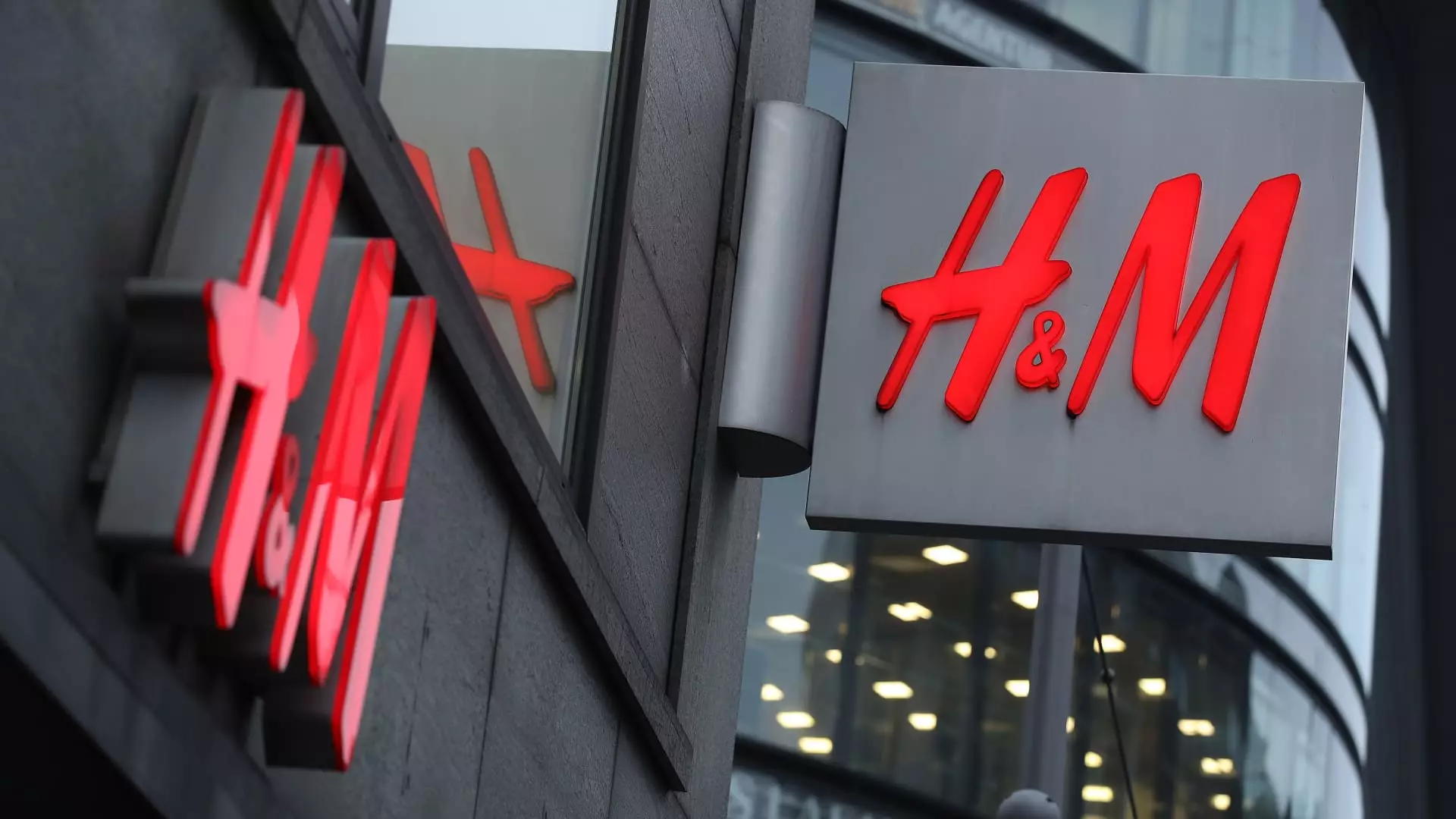In a striking turn of events, H&M, the renowned Swedish fashion retailer, witnessed its share price plummet by as much as 8% following the announcement of disappointing operating profit figures. For the fiscal third quarter, the company’s operating profit was recorded at a meager 3.51 billion Swedish crowns (approximately $345.8 million), a stark decline from 4.74 billion crowns in the same quarter of the previous year. This downturn not only falls short of analysts’ projections, which estimated a profit of 4.93 billion crowns, but raises concerns about the retailer’s strategic direction under recent leadership.
Compounding H&M’s woes, the company has withdrawn its earnings margin target for 2024, signaling an admission of the increasingly challenging market dynamics facing the retail sector. This decision adds considerable pressure on CEO Daniel Ervér, who took the reins merely eight months ago. Ervér had previously committed to delivering “unbeatable value for our customers and profitable growth,” but the current financial landscape raises doubts about the feasibility of such ambitious goals. The leadership change, most notably following Helena Helmersson’s departure, was expected to inject new vigor into the company. However, the results so far paint a different picture—one of struggle and adaptation rather than growth.
As H&M grapples with this downturn, numerous external factors play a pivotal role in shaping its financial landscape. The impact of adverse weather conditions, escalating living costs, and a notable decrease in post-pandemic consumer spending are reshaping the retail environment. Not only is H&M experiencing challenges in maintaining profitability, but it is also contending with fierce competition from rivals such as Inditex, which owns Zara, and the ever-competitive fast-fashion giant, Shein. Such competitive pressures create a complex web for H&M, making sustainable growth increasingly elusive.
Analysts from UBS have indicated that H&M’s financial challenges are multifaceted, highlighting considerable local currency sales yet an unwelcome increase in markdown-related costs. Furthermore, the retailer’s strategic decision to reduce its net store count aims to align operational efficiency with shifting market demands. As the company anticipates a slight uptick in markdown costs relative to sales in the fourth quarter, concerns about its stock performance linger. H&M’s significant miss on operational performance has positioned it among the weakest performers in the broader pan-European market.
H&M’s recent financial results serve as a clarion call for a critical reassessment of its strategic priorities. With a sharp drop in operating profits and the abandonment of previously set earnings targets, the pressure mounts on the company’s leadership to navigate a more complex retail landscape. As external factors continue to exert influence, it is crucial for H&M to adapt swiftly, refining its strategies to enhance profitability while maintaining customer value. The road ahead may prove to be arduous, yet with astute decision-making, there still exists the potential for recovery and revitalization.

